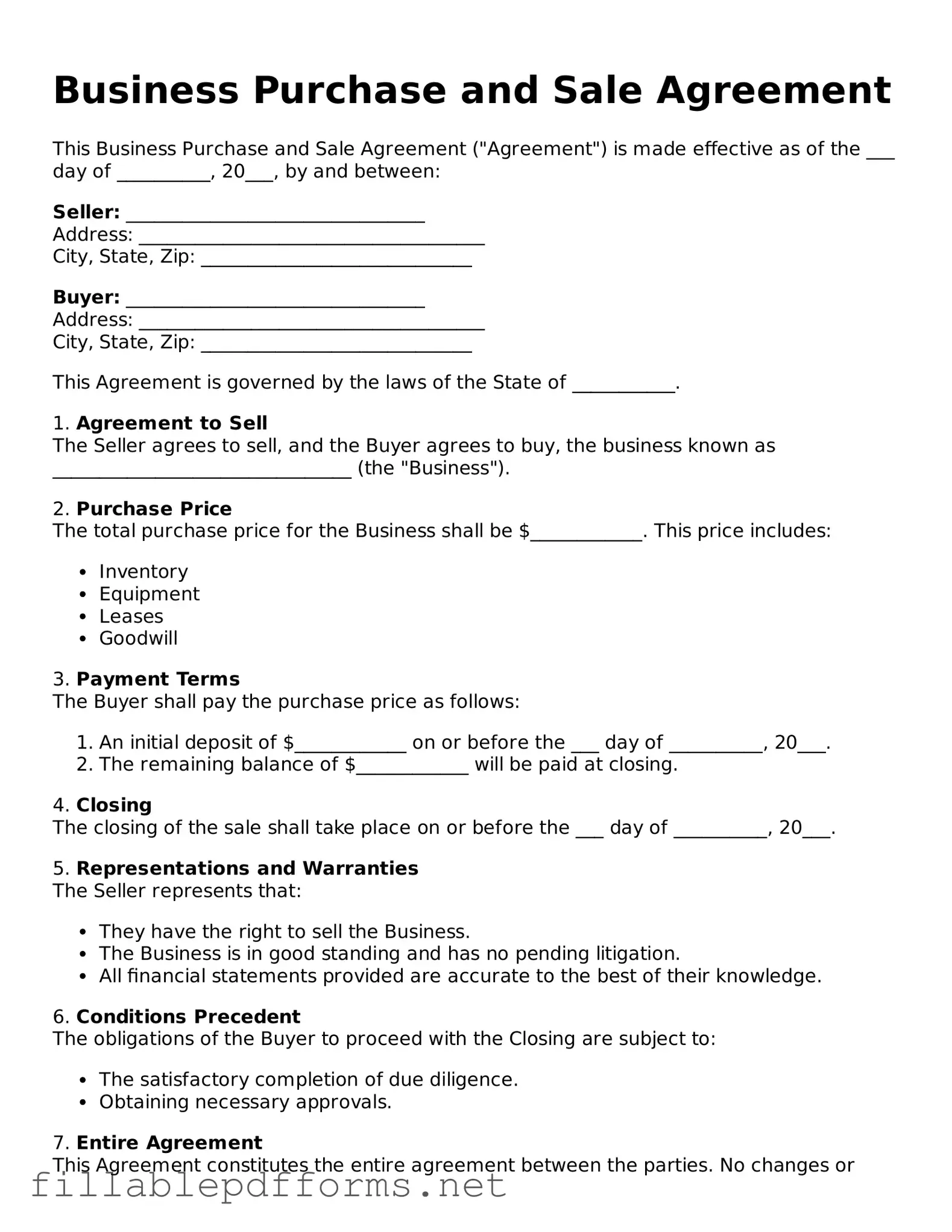Blank Business Purchase and Sale Agreement Template
The Business Purchase and Sale Agreement is a legal document that outlines the terms and conditions under which a business is bought or sold. This agreement serves to protect the interests of both the buyer and the seller, ensuring that all critical details are clearly defined. Understanding this form is essential for anyone involved in the transaction process, as it lays the groundwork for a successful transfer of ownership.
Launch Editor Here
